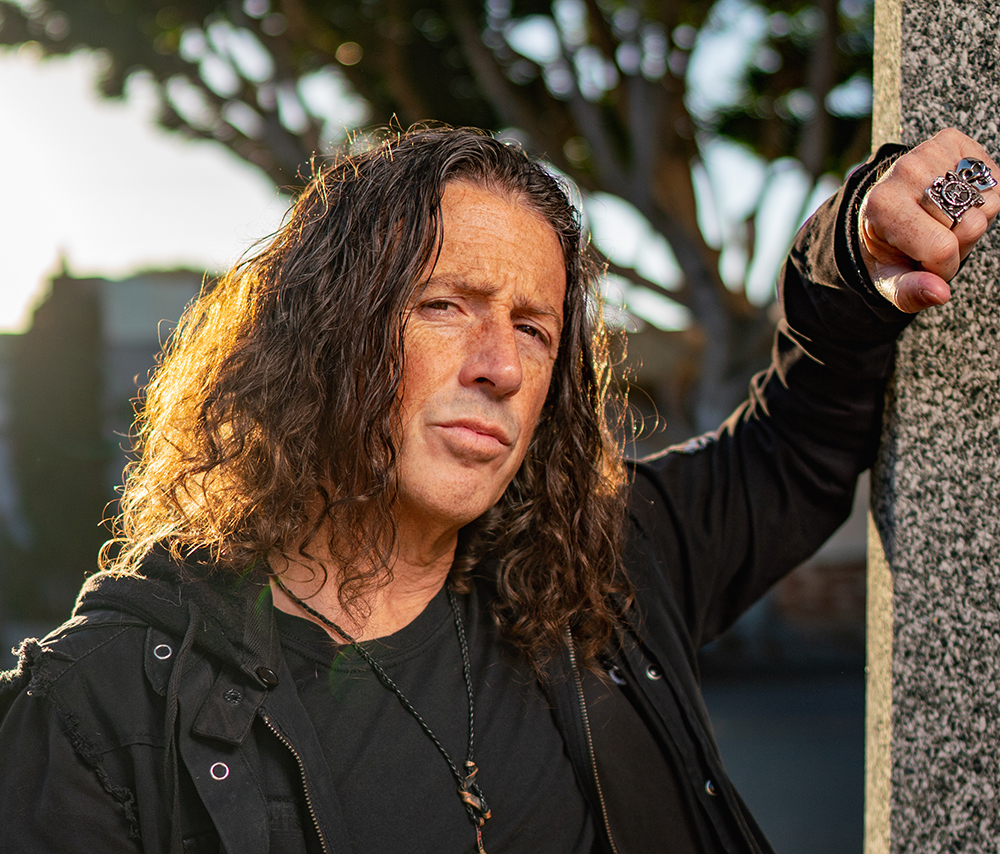Easily the biggest album in heavy metal history, Metallica’s fifth, self-titled release (AKA the Black Album) is surrounded by monumental numbers. It reached number one in nine different countries. It’s since been certified 16 times platinum in the US. And, today, upwards of 30 million people have it in their record collection.
However, the golden number right now is 12. That’s how many songs Metallica needed to go from the momentous thrash metal stars they were on …And Justice For All to bona fide, stadium-cramming immortals. Below is the story of every single one of them. From Enter Sandman to The Struggle Within, here’s your track-by-track guide to the monolithic Black Album.

Enter Sandman
One of Metallica’s greatest all-time anthems, Enter Sandman showcases producer Bob Rock’s influence with simpler, impactful lyrics, aligning with James Hetfield’s throaty vocal style. Kirk Hammett’s riff, inspired by Soundgarden’s Louder Than Love, became the backbone of the song. “I tried to write the heaviest thing I could think of,” said Kirk. Initially written about crib death, the theme was broadened, at Bob and Lars Ulrich’s suggestion, to describe a child’s nightmarish torments while sleeping.
Sad But True
Bob’s reluctance to work in L.A. dissolved upon hearing this song’s rough demo. “I could see his eyes light up,” said Lars Ulrich in Mick Wall’s Enter Night: A Biography Of Metallica. The band recorded the hefty track live in the studio, generating a raw, coursing energy and backbreaking heaviness by tuning their guitars one step lower. The resulting, seismic riff quickly found eternal life, pumping up fans in sports arenas for more than 30 years now.
Holier Than Thou
A broadside against moral hypocrisy, this blistering sleeper track quickly became a band favourite during the Black Album sessions – so much so that Rock nominated it to be lead single. Lars’ pick prevailed, however, and Enter Sandman got the nod. In Paul Brannigan’s Birth School Metallica Death, Vol. 1, Bob concedes, “Every time I see the band, they always say the same thing: ‘Holier Than Thou, huh?’ They'll never let me live it down.”
The Unforgiven
His vocal style inspired by Chris Isaak’s Wicked Game, James based The Unforgiven’s lyrics on his tumultuous childhood. After Kirk ran through several attempts at a fitting solo, Bob chastised him for not living up to a recent “guitarist of the year” award. Kirk responded with a fresh solo on the spot: a single, masterful take that appears in the final version. Unforgiven soared to number 10 on the Billboard Mainstream Rock chart in 1991.
Wherever I May Roam
Released as a single in October 1992, this anthemic paean to life on the road represents Metallica’s commitment to writing more concise, radio-friendly songs. James plays the iconic intro on a Coral: an electric guitar that mimics the sound of a sitar. Enhancing the song’s exotic feel, Jason Newsted contributed to the ambience with a 12-string Hamer Mandocello, blending captivating Eastern sounds with pulverising metal grooves that made this standout instantly memorable.
Don’t Tread On Me
A contrast to the anti-war sentiments of 1988’s One, Don’t Tread On Me incited scathing criticism from some fans, who viewed it as a jingoistic celebration of US military force. James later denied the song was political, saying, “We never labelled ourselves as an anti-war band. Anti-this or pro-anything.” Despite that defence, the frontman later dismissed the track as “probably not one of my favourite songs musically” during a 2001 Playboy interview.
Through The Never
For this mid-tempo punch about exploring the dimensions of the human mind, Bob had James try playing his parts on a host of vintage amps, before agreeing that the frontman’s standard rig was the best option. In his book, Metallica: All The Songs, Benoît Clerc quotes James as saying: “We sure as hell weren’t making Led Zeppelin I.” The band later named their 2013 concert film, Metallica: Through The Never, after this track.
Nothing Else Matters
James never envisioned this emotive power ballad as a Metallica track. Speaking to Classic Rock, he rhetorically asked, “What was it about not wanting to write a love song? That’s pretty easy. It’s a huge sign of weakness. You’re in Metallica. This is hardcore. What the fuck are you doing?” But, at the Black Album’s 1991 release party at Madison Square Garden, James noted, with palpable relief: “People were really into it, which was pretty amazing.”
Of Wolf And Man
Of Wolf And Man’s title was inspired by John Steinbeck’s Of Mice And Men, but Bob found the concept of writing about a big dog borderline absurd. As the producer delved deeper into James’ vision, though, he saw that the track’s essence celebrated humanity’s primal connection with nature. Initially, the riff, written by Kirk, was inverted: James and Lars suggested that he flip the parts around, which is what everyone now hears in the final mix.
The God That Failed
On The God That Failed, James channels his deep-seated grief and resentment over his mother’s death into powerful lyrics and crushing fretwork. He attributes the tragedy to her Christian Science faith, which prioritised spiritual healing over medical treatment. The piledriving riffs and swaggering tempo amplify that emotional intensity, and the sound effect of James cocking a hunting rifle in the final verse only underscores his violent opposition to Christian Science ideas in his adulthood.
My Friend Of Misery
A significant moment for Jason: this track earned him a rare songwriting credit. Although originally intended to be an instrumental, James and Lars added vocals as they developed the initial bass riff into a full-fledged track. Nonetheless, Jason’s pride in this song endured well beyond his Metallica departure. Speaking to Billboard in 2016, the bassist said, “That was a moment where those guys kind of bowed and said, ‘Here you go, man, put your song on there.’”
The Struggle Within
Played live only 20 times, this closing track explored James’ waning creative energy in Metallica’s final days in the studio. Its inclusion on the Black Album unleashed not just a powerful sound, showcasing Kirk’s enduring love of the wah pedal, but a raw, introspective glimpse into Metallica’s singer/guitarist’s fraying psyche at the time. “I’m no psychiatrist, but it’s right there,” he has since said, speaking to the anger coursing through the song.


